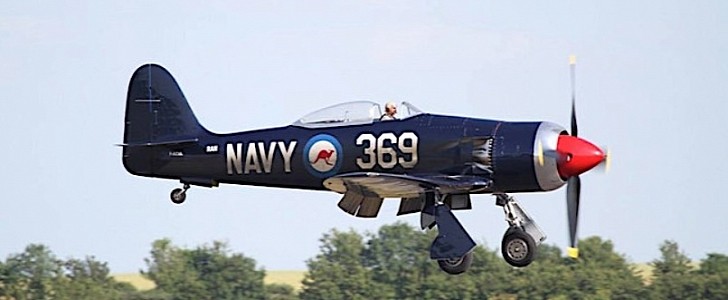If you’re a regular at air shows, then you’ve probably seen a Hawker Fury in action. The single-engined British-made machine has been doing the rounds in the skies over the U.S. for decades now, but there’s probably a little aspect about it not all of us knew: a good chunk of them come from Iraq.
The Fury rolled off the same lines that spat out the mighty Hurricane starting with 1944. It was developed both as a carrier- and land-based aircraft, but because it missed most of the Second World War fighting, it became an object for export, being shipped to a great deal of countries, including Cuba, Iraq, and Pakistan.
As they left the factory floor, the Furies could be equipped with a variety of weapons, ranging from autocannons to rockets. The plane could reach speeds of 460 mph (740 kph), fly as high as 18,000 ft (5,486 m), and go about its business for as much as 780 miles (1,260 km) at a time.
Among the nations that got the British Fury was Iraq. The country was not necessarily a major customer for these airplanes, but the ones that were delivered to Iraq now make up for the bulk of those that survived to this day.
The one we have here, made in 1949, is one of the Iraq Furies. It served as part of the country’s Air Force from production to the 1960s, after which, like many of its kind, it was retired and shipped to the U.S. in the hands of private collectors.
Furies came out the factory doors fitted with Rolls-Royce engines and came as single-seaters, but this one uses a Curtiss Wright powerplant good for 2,800 hp. It was remade as a two-seater, with the swap and addition of the extra seat happening after the plane went through a forced landing in the 1980s.
Presently, the aircraft is wrapped in a Royal Australian Navy Royal Blue scheme and is located in France. It is for sale, of course, and the asking price is €1.2 million (close to $1.5 million at today’s rates).
As they left the factory floor, the Furies could be equipped with a variety of weapons, ranging from autocannons to rockets. The plane could reach speeds of 460 mph (740 kph), fly as high as 18,000 ft (5,486 m), and go about its business for as much as 780 miles (1,260 km) at a time.
Among the nations that got the British Fury was Iraq. The country was not necessarily a major customer for these airplanes, but the ones that were delivered to Iraq now make up for the bulk of those that survived to this day.
The one we have here, made in 1949, is one of the Iraq Furies. It served as part of the country’s Air Force from production to the 1960s, after which, like many of its kind, it was retired and shipped to the U.S. in the hands of private collectors.
Furies came out the factory doors fitted with Rolls-Royce engines and came as single-seaters, but this one uses a Curtiss Wright powerplant good for 2,800 hp. It was remade as a two-seater, with the swap and addition of the extra seat happening after the plane went through a forced landing in the 1980s.
Presently, the aircraft is wrapped in a Royal Australian Navy Royal Blue scheme and is located in France. It is for sale, of course, and the asking price is €1.2 million (close to $1.5 million at today’s rates).





